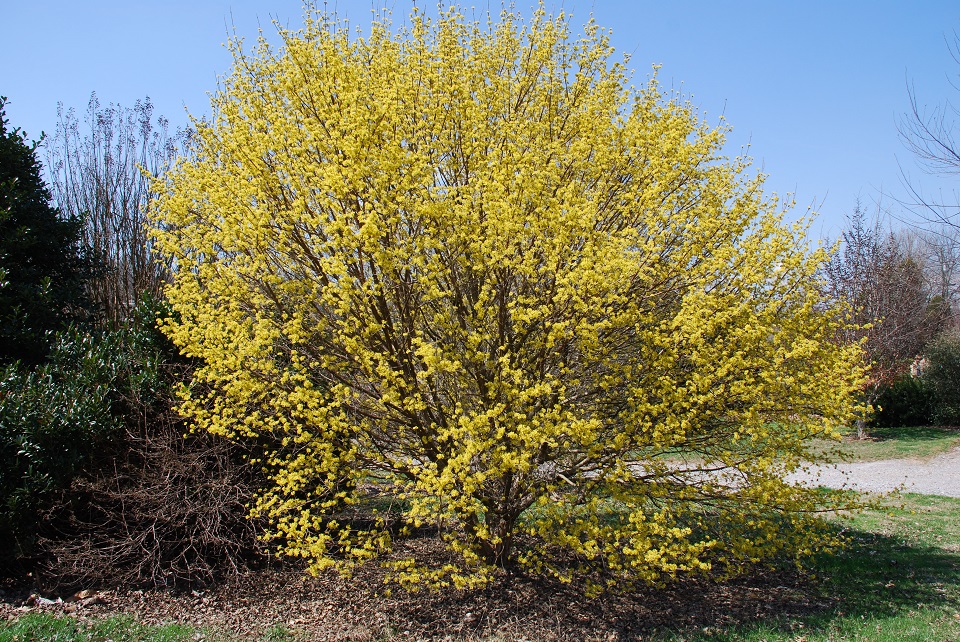
Submitted by Dr. Sue Hamilton, director of the UT Gardens
The landscape can be dreary in January and February, so trees or shrubs that offer a bit of cheer with winter blooms can be a welcome addition to almost any yard or garden. Underused in the landscape, the Japanese Cornel Dogwood is just such a plant. In midwinter it defies the gloom with showy clusters of yellow flowers.
The Japanese Cornel Dogwood’s exfoliating bark also adds interest to the winter garden with its rich grays, browns and oranges.
Native to Japan and Korea, Cornus officinalis usually grows as a large, spreading, multi-stemmed, deciduous shrub or a small tree up to 15-25 feet tall. A deciduous plant, with pale yellow to reddish-purple fall foliage, the Japanese Cornel Dogwood is effective in the landscape when used in foundation plantings, shrub borders, woodland gardens, bird gardens or naturalized areas. The plant prefers full sun to partial shade and tolerates a range of soil types. In the autumn, like other dogwoods, showy red fruits (drupes) decorate this plant. Technically these drupes are edible, but most would find them astringent.
Japanese Cornel Dogwood is just one of about 30 to 50 species of dogwood, including our more familiar native flowering dogwood tree Cornus florida. Although it resembles the Cornelian Cherry Dogwood (Cornus mas), the Japanese Cornel Dogwood grows with a slightly more open habit, flowers a bit earlier and has more attractive bark than Cornelian Cherry Dogwood.
Several great cultivars of Japanese Cornel Dogwood are available on the market including ‘Sunsphere’ which flowers slightly earlier than others in the species; ‘Kintoki’ known for its heavier bloom; ‘Lemon Zest’ which has larger flowers than most selections; ‘Issai Minan’ which flowers well as a young plant; and ‘Morris Arboretum’ which has heavy bloom and a slightly longer flowering period. Tennessee nursery owner and University of Tennessee horticulture alumnus Mike Stansberry introduced the Sunsphere selection. He named it for the Knoxville Sunsphere, a landmark architectural tower that was constructed as part of the 1982 World’s Fair. East Tennessee is home to Stansberry’s Beaver Creek Nursery.
Sue Hamilton, director of the UT Gardens, first wrote about the Japanese Cornel Dogwood as the March 2009 UT Gardens Plant of the Month. She is still enthusiastic about this plant as a winter feature. The UT Gardens includes plant collections located in Knoxville, Jackson and Crossville. Designated as the official botanical garden for the State of Tennessee, the collections are part of the UT Institute of Agriculture. The gardens’ mission is to foster appreciation, education and stewardship of plants through garden displays, educational programs and research trials. The gardens are open during all seasons and free to the public. For more information see http://utgardens.tennessee.edu.
Contact:
Dr. Sue Hamilton, director of the UT Gardens
Patricia McDaniels, UTIA Marketing and Communications, 615-835-4570